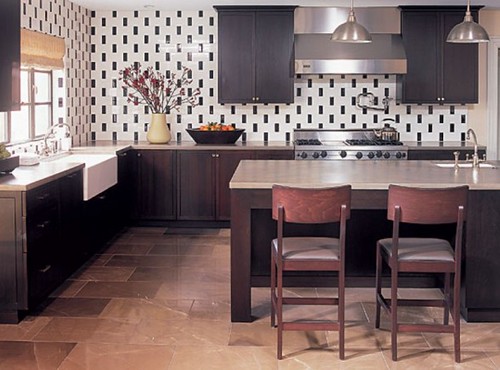Statistics show that one in seven home kitchens would fail the kind of health inspection that restaurants have to pass. This is scary when you consider that nearly 80 million cases of food poisoning are reported every year in the US. Something like 80 percent of those illnesses are likely to have been caused by food prepared in the home.

Using separate cutting boards for raw poultry, meat, and vegetables is what most people think of when you ask them about kitchen safety. That and not cutting off their fingers with a sharp knife! There is a lot more to it. The USDA wants us to remember these four basics: Clean, separate, cook, and chill.
Clean
This doesn’t just mean washing your hands. The whole kitchen needs to be clean. The kitchen cabinets need to be dusted and wiped. Countertops should be sanitized before and after any food prep is done on them. Replace your kitchen sponge as they harbor germs and bacteria. You can clean them thoroughly by boiling them for 5 to 10 minutes. Reusable dishrags may be a better choice because you can throw them in the laundry every day as long as you wash them in hot water or dry them on high heat. Use bleach to sanitize your kitchen sink. Clean the tops of canned food right before you open it. It may have stayed clean in your cabinet, but that doesn’t mean rats and roaches weren’t walking on it at the warehouse.
Separate
Keep raw meat away from everything else and start by keeping it separate while shopping. It should not be allowed to come in contact with food that will be eaten uncooked because rinsing a piece of fruit that has been contaminated will not kill bacteria. Of course, as mentioned before, use separate cutting boards. The easiest way is to buy a pack of flexible plastic mats that are usually color coded and often have images on them to differentiate which type of food it is to be used for. They should always be sanitized after being used. The plastic ones can go in the dishwasher. When grilling keep the meat and poultry separate, even after cooking. Don’t baste meat with the marinade it was sitting in while raw, you may not get it hot enough to kill the bacteria that could be present.
Cook
Get a meat thermometer. Checking the internal temperature is the best way to make sure you have heated meat enough to kill bacteria. You can find charts online to figure out the safest temperatures. If you have prepped food in advance, get it back into the refrigerator immediately and keep it there until you are ready to cook it. Casseroles should be brought up to 165 degrees.
Chill
The USDA reports that some types of bacteria grow so quickly they can double in less than 20 minutes. This means food should not be left to sit out for long. Leftovers should be covered and refrigerated immediately and eaten or tossed within four days. Make sure your fridge is cooling food optimally. It should be at 40 degrees.
Katherine Brown is a cooking guru and mother of 4 who works with Drury Designs. She often covers topics relating to the kitchen and loves to give tips on how to organize and clean.
Photo Credit: emilyindc


very nice publish, i definitely love this website, carry on it.